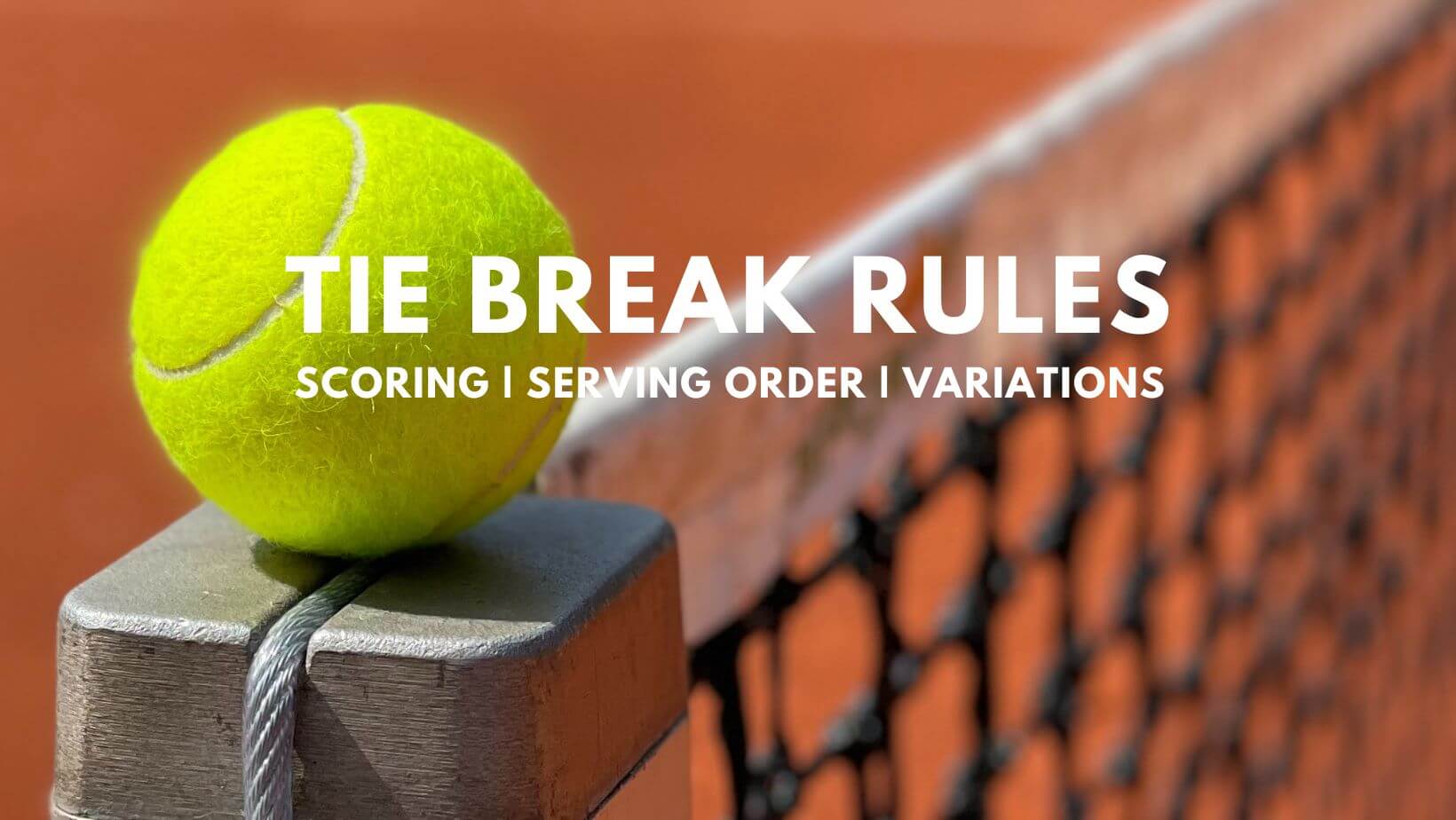Tiebreak Basics

Tennis tiebreak rules – In tennis, a tiebreak is a scoring system used to determine the winner of a set when the score reaches 6-6. It is designed to break the tie and avoid lengthy sets that could potentially drag on indefinitely.
Tiebreaks, a crucial aspect of tennis, introduce an element of intensity and drama to the game. The tennis tiebreak rules are designed to break deadlocks in a set and determine a winner. Understanding these rules is essential for players and spectators alike, as they dictate the strategy and tactics employed during these pivotal moments on the court.
Scoring System
A tiebreak is played as a series of points, with the first player or team to reach 7 points with a margin of at least 2 points winning the set. The scoring system is different from the regular game scoring, with points being awarded as follows:
- 0 points: Love
- 1 point: 15
- 2 points: 30
- 3 points: 40
- 4 points: Game
In a tiebreak, the player or team who wins a point serves the next point. The server alternates sides of the court every two points, similar to the regular game.
In tennis, a tiebreak is a sudden-death game played to decide the winner of a set that is tied at 6-6. The player who wins the tiebreak wins the set. Tiebreaks are often used in the women’s Wimbledon final, which is one of the most prestigious tennis tournaments in the world.
Click here to learn more about the women’s Wimbledon final. The rules of a tiebreak are relatively simple. Each player serves two points in a row, and the first player to reach seven points wins the tiebreak. If the score is tied at 6-6, the player who served the last point serves the next point.
Examples
Consider the following examples of tiebreak scenarios and outcomes:
- Player A wins 7-2: Player A wins the tiebreak and the set.
- Player B wins 9-7: Player B wins the tiebreak and the set, despite Player A reaching 7 points first.
- The tiebreak reaches 6-6: The tiebreak continues until one player or team wins with a margin of at least 2 points.
Tiebreaks add an element of excitement and unpredictability to tennis matches, often deciding close sets and even entire matches.
Strategic Considerations in Tiebreaks: Tennis Tiebreak Rules

Tiebreaks are crucial moments in a tennis match, requiring players to execute strategic decisions and adjustments. Understanding the nuances of tiebreaks can give players an edge and improve their chances of success.
Serving and Returning Effectively, Tennis tiebreak rules
Serving effectively is paramount in tiebreaks. Players should aim for deep serves with good pace and placement to pressure opponents and force errors. Effective returning is equally important, as players must anticipate the serve and react quickly to gain control of the point.
Player Positioning and Shot Selection
Positioning on the court can impact tiebreak outcomes. Players should stand slightly behind the baseline to give themselves ample time to react to serves. They should also anticipate their opponent’s shot selection and move accordingly to cover the court effectively.
Strategies for Gaining an Advantage
- Aggressive Serving: Serving with power and accuracy can put pressure on opponents and force them into errors.
- Varied Returns: Mixing up returns with depth, pace, and spin can keep opponents guessing and disrupt their rhythm.
- Patience and Consistency: Staying composed and executing shots consistently can help players build momentum and wear down their opponents.
Tiebreak Variations and Rule Exceptions
Tiebreaks have evolved over time, and different variations and rule exceptions exist in professional tennis.
Variations in Tiebreak Scoring
The traditional tiebreak format is a 7-point tiebreak, where the first player to reach 7 points with a margin of 2 points wins. However, some tournaments and formats use different scoring systems:
- 10-point tiebreak: Used in some lower-level tournaments and in the Davis Cup.
- Sudden-death tiebreak: A tiebreak that ends as soon as one player wins the next point after the score reaches 6-6.
Rule Exceptions
In certain situations, exceptions to the standard tiebreak rules may apply:
- No-ad scoring: In some tournaments, no-ad scoring is used, where there are no deuces and the server wins the point if they win the next rally after a 40-40 score.
- First-to-10 tiebreak: In some exhibition matches, a first-to-10 tiebreak is played instead of the traditional 7-point tiebreak.
Historical Context
The tiebreak was first introduced in professional tennis in 1970 to resolve matches that reached a 6-6 score in the final set. Over time, different variations and rule exceptions have been adopted to improve the fairness and excitement of tiebreaks.